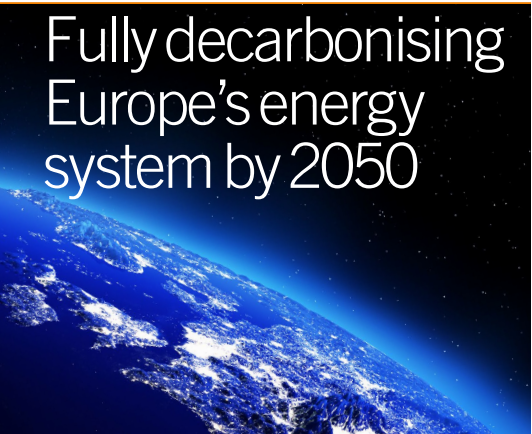Fully decarbonising Europe’s energy system by 2050
Using the BID3 Auto Build module, this study investigates the key question: “How can a fully decarbonised energy sector be achieved and what are the risks of precluding options in favour of certain technologies?”
This study was carried out using BID3 and the Auto Build module, as well as newly developed models of the transport and heat sectors, and investigated two main scenarios of the European energy system in 2050:
- The ‘Zero Carbon Gas’ pathway represents a future where economics determine which technologies are deployed in order to fully decarbonise the energy sector. The gas industry is allowed to adapt to the requirements of a decarbonised system and provides zero carbon energy in all sectors
- The 'All Electric' pathway pathway builds upon the assumption that only electrification can achieve decarbonisation and policies are put in place to prevent the development of ‘Zero Carbon Gas’ alternatives, resulting in new nuclear and biomass build
The good news is that this study has shown that it is feasible to fully decarbonise Europe’s transport, heat and electricity sectors by 2050.
However, achieving this will require significant investments and requires major transformation across all three sectors regardless of which particular pathways stakeholders chose to follow.
That said there are some key messages and risk mitigation factors that all stakeholders should consider based on the analysis in this study. The three key messages from this study can be summarised as follows:
- Delivering decarbonisation will require significant investment (almost €1 trillion in new power generation alone) and delivering zero carbon solutions is not without risk. A pathway that precludes options, e.g. CCS, could lead to higher investment costs than necessary (e.g. in power generation or networks) and increased risks. Accordingly, it is prudent to keep as much flexibility in the technology options available.
- Allowing competition between all energy sources leads to a more integrated and lower cost solution. A more restricted pathway, such as the ‘All-Electric’, prohibits this competition and leads to a world with much higher costs. In transport, fuel cells appear to be more efficient than batteries in heavy duty vehicles; in heat, hydrogen offers a cost-effective solution; in power, the resulting system is more flexible and relies significantly less on nuclear generation.
- The large-scale electrification of heat and transport across both pathways leads to a significant increase in power demand. In order to keep the system operation costs at a manageable level, consumers need access to smart grids and to willingly change their behaviour in order to unleash demand flexibility. In a future with significant intermittent generation this flexible demand will be able to meet supply, which is contrary to the current typical mechanism of supply meeting demand
Ed: This article predates November 2019, when ÅF and Pöyry came together as AFRY.



